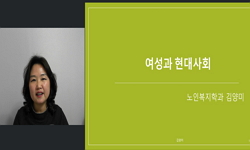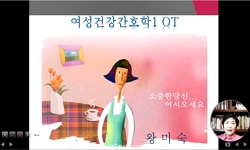<Banghanrimjeon> drew attention in the history of classical novels as a work that strongly shocked the medieval ruling order by revealing the taboo subject of same-sex marriage. <Banghanrimjeon> examines the traces of hardship and anguish ...
http://chineseinput.net/에서 pinyin(병음)방식으로 중국어를 변환할 수 있습니다.
변환된 중국어를 복사하여 사용하시면 됩니다.
- 中文 을 입력하시려면 zhongwen을 입력하시고 space를누르시면됩니다.
- 北京 을 입력하시려면 beijing을 입력하시고 space를 누르시면 됩니다.

여성의 주체되기와 살아남기 — <방한림전>을 중심으로 — = Women's Subjectivity and Survival - Focusing on <Banghanrimjeon>
한글로보기https://www.riss.kr/link?id=A108427203
-
저자
한의숭 (전남대학교)
- 발행기관
- 학술지명
- 권호사항
-
발행연도
2022
-
작성언어
Korean
-
주제어
<방한림전> ; 여성 ; 정체성 ; 주체성 ; 상호의존성 ; 살아남기. ; <Banghanrimjeon> ; Women ; identity ; subjectivity ; interdependence ; survival.
-
등재정보
KCI등재
-
자료형태
학술저널
- 발행기관 URL
-
수록면
139-166(28쪽)
- 제공처
-
0
상세조회 -
0
다운로드
부가정보
다국어 초록 (Multilingual Abstract)
Bystanders deny the female identity itself and choose marriage to possess and acquire subjectivity in the process of imitating male identity. On the other hand, Young Hye-bing rejects the identity imposed on women, but paradoxically chooses to use the marriage system to cover it up externally. This means that the life option given in front of women inevitably results in either transfer or resistance, and it is understood that the acquisition of women's subjectivity is still difficult. However, the two main characters of <Banghanrimjeon>, Bang Gwan-ju and Yeong Hye-bing, constantly try to escape from their given identity. Sometimes, even if the method is only incorporation and resistance, it is the same for both women in that it is the process of surviving the oppression and restraint given to women and standing as subjects, and it is interdependence that plays an important role. In this respect, it is necessary to once again note that the system of marriage lies at the root of the identity imposed on women. Bystander and Young Hye-bing's conflicting reactions make us look back on the power hierarchy of the marriage system.
This paper corresponds to a request for a change of direction to the perspective focused on the ripple effect and gender of the subject of same-sex marriage in the interpretation surrounding <Banghanrimjeon>. Rather, it reminds us that the marriage system, which exists as a hierarchy, can sometimes be reset as a buffer zone to secure safety. Therefore, an attempt to take a new approach to the problem of identity and subjectivity surrounding the <Banghanrimjeon> focusing on the relationship with the system is necessary, and this paper corresponds to pointing out this.
<Banghanrimjeon> drew attention in the history of classical novels as a work that strongly shocked the medieval ruling order by revealing the taboo subject of same-sex marriage. <Banghanrimjeon> examines the traces of hardship and anguish caused by the marriage system, which provides the basic foundation for the existence of the state in a class society, acting as a bond between restraint and oppression for two women in the play. The same-sex marriage between Bang Gwan-ju and Yeong Hye-bing, the female protagonists of <Banghanrimjeon> was possible because they chose their partner as a viable target, but there was a difference in their intentions. This is evident in the way the two women respond to identities that come violently to the two women bystanders and Young Hye-bing.
Bystanders deny the female identity itself and choose marriage to possess and acquire subjectivity in the process of imitating male identity. On the other hand, Young Hye-bing rejects the identity imposed on women, but paradoxically chooses to use the marriage system to cover it up externally. This means that the life option given in front of women inevitably results in either transfer or resistance, and it is understood that the acquisition of women's subjectivity is still difficult. However, the two main characters of <Banghanrimjeon>, Bang Gwan-ju and Yeong Hye-bing, constantly try to escape from their given identity. Sometimes, even if the method is only incorporation and resistance, it is the same for both women in that it is the process of surviving the oppression and restraint given to women and standing as subjects, and it is interdependence that plays an important role. In this respect, it is necessary to once again note that the system of marriage lies at the root of the identity imposed on women. Bystander and Young Hye-bing's conflicting reactions make us look back on the power hierarchy of the marriage system.
This paper corresponds to a request for a change of direction to the perspective focused on the ripple effect and gender of the subject of same-sex marriage in the interpretation surrounding <Banghanrimjeon>. Rather, it reminds us that the marriage system, which exists as a hierarchy, can sometimes be reset as a buffer zone to secure safety. Therefore, an attempt to take a new approach to the problem of identity and subjectivity surrounding the <Banghanrimjeon> focusing on the relationship with the system is necessary, and this paper corresponds to pointing out this.
동일학술지(권/호) 다른 논문
-
- 동양고전학회
- 박혜영
- 2022
- KCI등재
-
- 동양고전학회
- 권혁명
- 2022
- KCI등재
-
- 동양고전학회
- 김휘
- 2022
- KCI등재
-
<숙영낭자전>에 나타난 운명적 사랑의 서사 전략 — <사랑의 불시착>과의 비교를 중심으로 —
- 동양고전학회
- 최윤희
- 2022
- KCI등재




 KCI
KCI eArticle
eArticle






